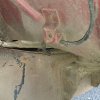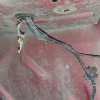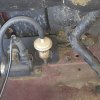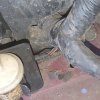Coming back to revive this thread.
@UnitLandy did you ever fix your LF height sensor issue?
I ended up having to rebuild my compressor as it gave up and wouldn't lift from access mode. I also calibrated it with the stick method as best as I could last summer, but it did not fix the height sensor issue. We did solder half of the white connectors IIRC, but I guess we have to go back to solder the rest as well. Because it's giving wild readings with Nanocom, with the target heights as I set them within range of each other and live heights between the LF and RF sensor have a 100 bit count difference, with the RF being at 120 and LF at 20...
The main symptom is EAS fault in dash, especially when idling for longer than a minute, but lately also when driving on a flat road. Have to find the soldering iron again and take a look at any potential EAS ECU corrosion as well.




